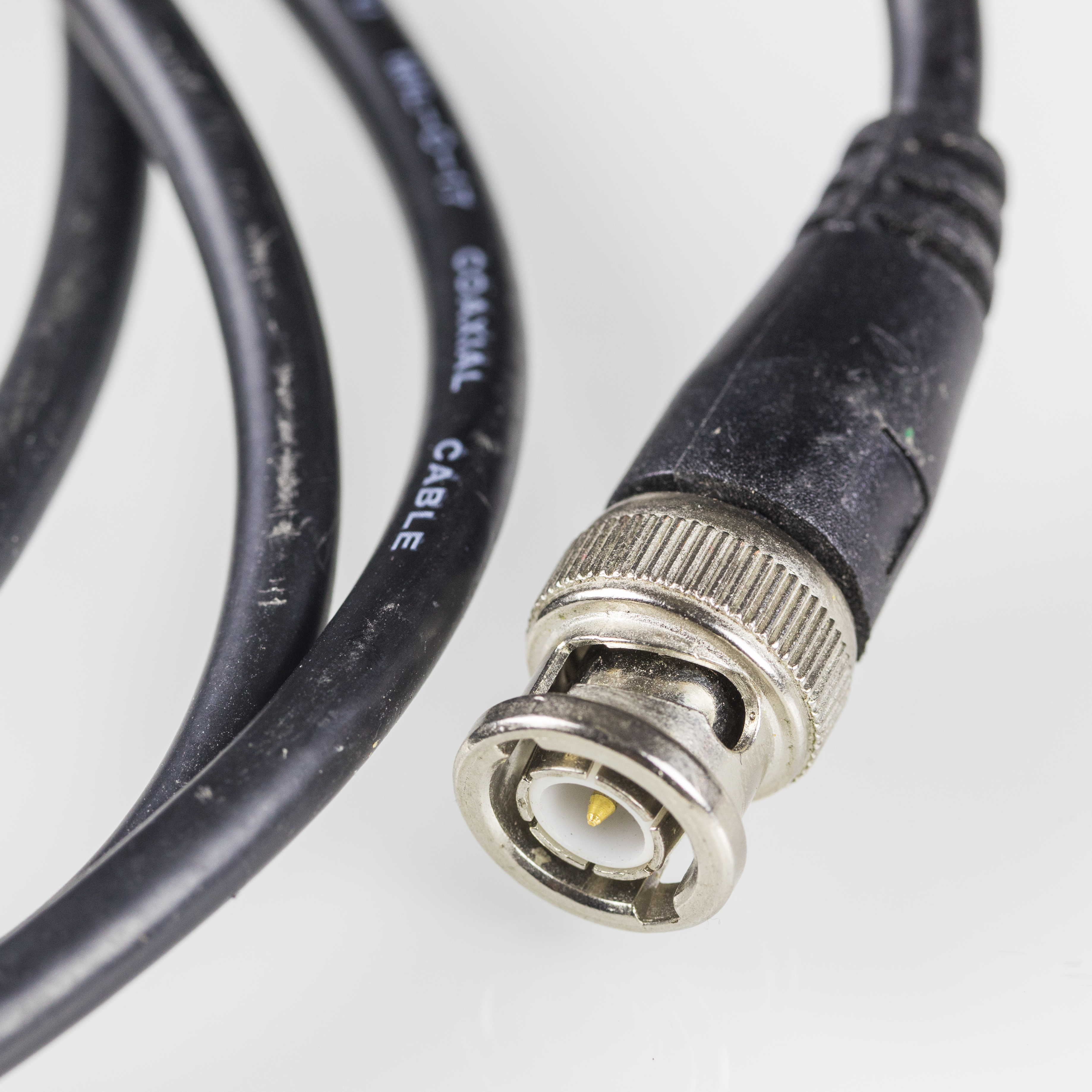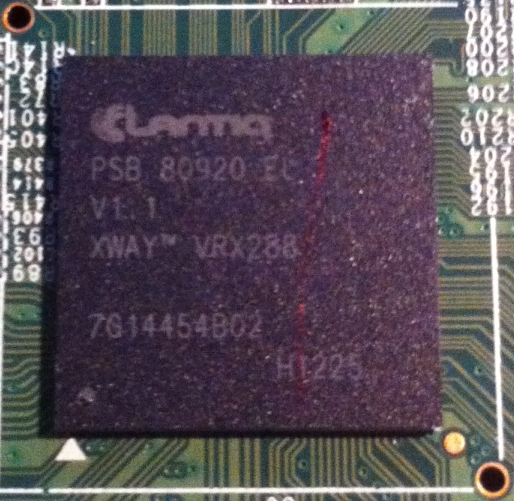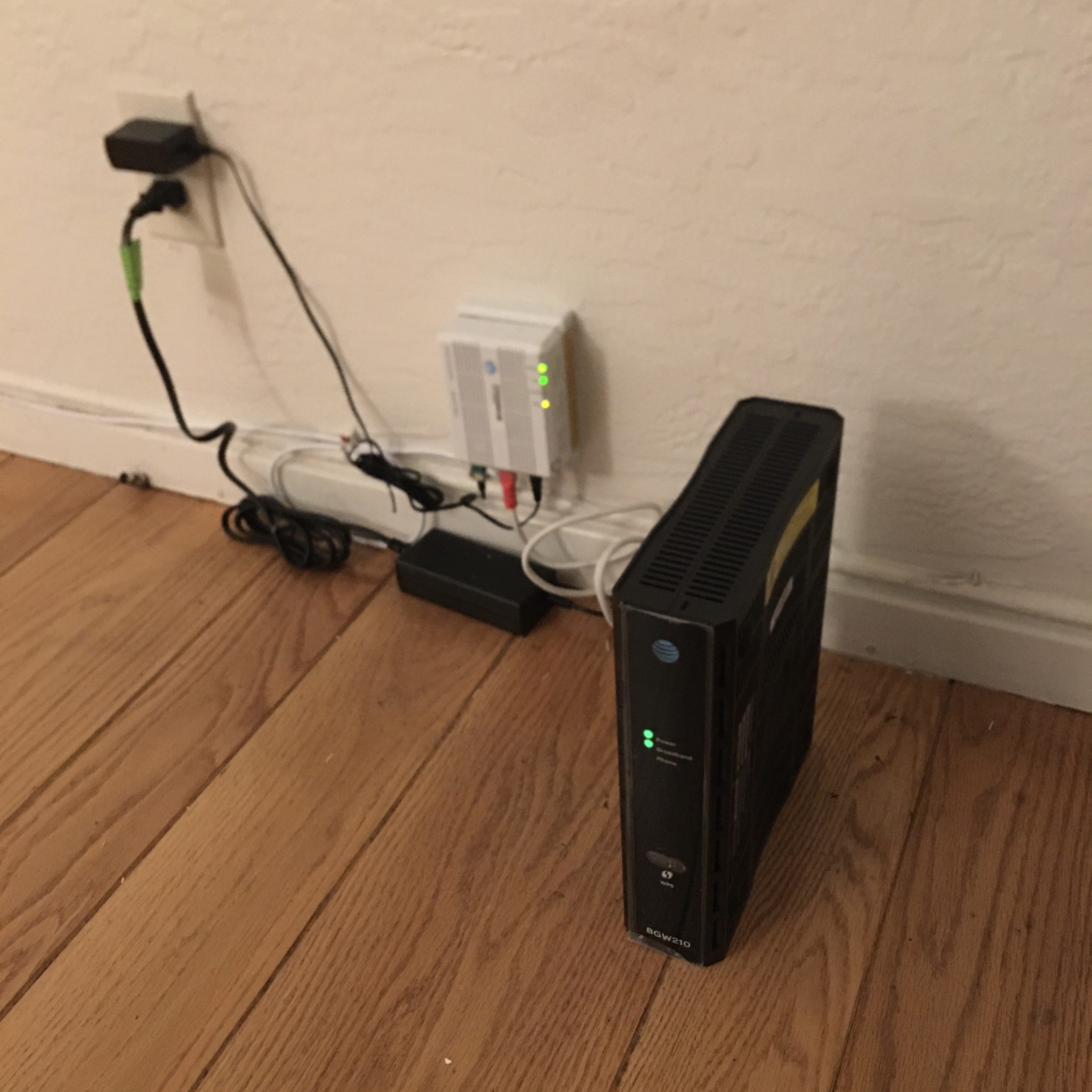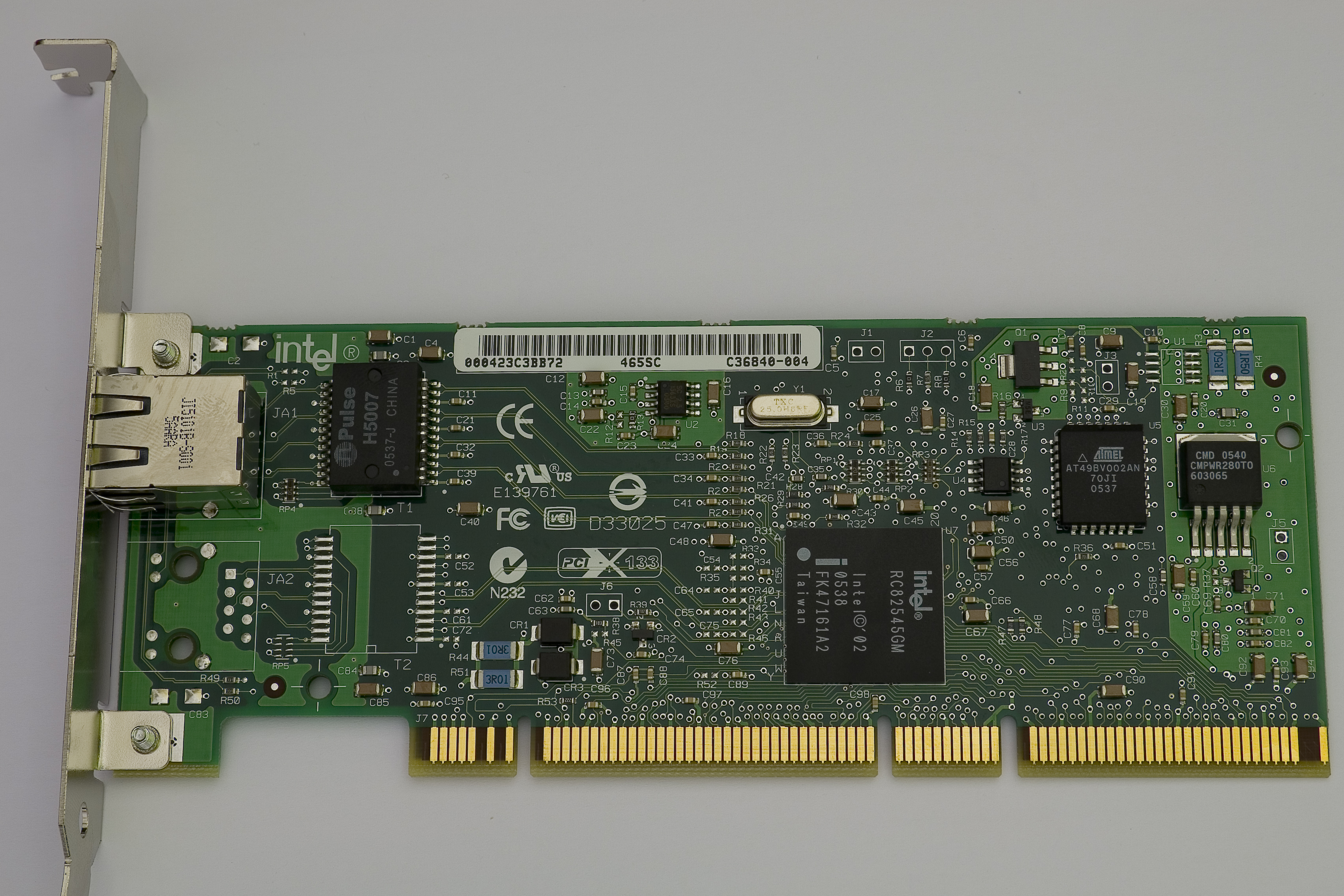|
List Of Network Protocols (OSI Model)
This article lists protocols, categorized by the nearest layer in the Open Systems Interconnection model. This list is not exclusive to only the OSI protocol family. Many of these protocols are originally based on the Internet Protocol Suite (TCP/IP) and other models and they often do not fit neatly into OSI layers. Layer 1 (physical layer) * Telephone network modems * IrDA physical layer * USB physical layer * EIA RS-232, EIA-422, EIA-423, RS-449, RS-485 * Ethernet physical layer 10BASE-T, 10BASE2, 10BASE5, 100BASE-TX, 100BASE-FX, 1000BASE-T, 1000BASE-SX and other varieties * Varieties of 802.11 Wi-Fi physical layers * DSL * ISDN * T1 and other T-carrier links, and E1 and other E-carrier links * ITU Recommendations: see ITU-T * IEEE 1394 interfaces * TransferJet * Etherloop * ARINC 818 Avionics Digital Video Bus * G.hn/G.9960 physical layer * CAN bus (controller area network) physical layer * Mobile Industry Processor Interface physical layer * Infrared * Frame Relay * F ... [...More Info...] [...Related Items...] OR: [Wikipedia] [Google] [Baidu] |
OSI Model
The Open Systems Interconnection model (OSI model) is a conceptual model that 'provides a common basis for the coordination of SOstandards development for the purpose of systems interconnection'. In the OSI reference model, the communications between a computing system are split into seven different abstraction layers: Physical, Data Link, Network, Transport, Session, Presentation, and Application. The model partitions the flow of data in a communication system into seven abstraction layers to describe networked communication from the physical implementation of transmitting bits across a communications medium to the highest-level representation of data of a distributed application. Each intermediate layer serves a class of functionality to the layer above it and is served by the layer below it. Classes of functionality are realized in all software development through all and any standardized communication protocols. Each layer in the OSI model has its own well-defined functi ... [...More Info...] [...Related Items...] OR: [Wikipedia] [Google] [Baidu] |
10BASE2
10BASE2 (also known as cheapernet, thin Ethernet, thinnet, and thinwire) is a variant of Ethernet that uses thin coaxial cable terminated with BNC connectors to build a local area network. During the mid to late 1980s this was the dominant 10 Mbit/s Ethernet standard, but due to the immense demand for high-speed networking, the low cost of Category 5 cable, and the popularity of 802.11 wireless networks, both 10BASE2 and 10BASE5 have become increasingly obsolete, though devices still exist in some locations. As of 2011, IEEE 802.3 has deprecated this standard for new installations. Name origination The name ''10BASE2'' is derived from several characteristics of the physical medium. The ''10'' comes from the transmission speed of 10 Mbit/s. The ''BASE'' stands for baseband signaling, and the ''2'' for a maximum segment length approaching 200 m (the actual maximum length is 185 m). Signal encoding 10 Mbit/s Ethernet uses Manchester coding. A binary ... [...More Info...] [...Related Items...] OR: [Wikipedia] [Google] [Baidu] |
IEEE 1394 Interface
IEEE 1394 is an interface standard for a serial bus for high-speed communications and isochronous real-time data transfer. It was developed in the late 1980s and early 1990s by Apple in cooperation with a number of companies, primarily Sony and Panasonic. Apple called the interface FireWire. It is also known by the brand names i.LINK (Sony), and Lynx (Texas Instruments). The copper cable used in its most common implementation can be up to long. Power and data is carried over this cable, allowing devices with moderate power requirements to operate without a separate power supply. FireWire is also available in Cat 5 and optical fiber versions. The 1394 interface is comparable to USB. USB was developed subsequently and gained much greater market share. USB requires a host controller whereas IEEE 1394 is cooperatively managed by the connected devices. History and development FireWire is Apple's name for the IEEE 1394 High Speed Serial Bus. Its development was initiated ... [...More Info...] [...Related Items...] OR: [Wikipedia] [Google] [Baidu] |
ITU-T
The ITU Telecommunication Standardization Sector (ITU-T) is one of the three sectors (divisions or units) of the International Telecommunication Union (ITU). It is responsible for coordinating standards for telecommunications and Information Communication Technology Information and communications technology (ICT) is an extensional term for information technology (IT) that stresses the role of unified communications and the integration of telecommunications (telephone lines and wireless signals) and computers, ... such as X.509 for cybersecurity, Y.3172 and Y.3173 for machine learning, and H.264/MPEG-4 AVC for video compression, between its Member States, Private Sector Members, and Academia Members. The first meeting of the World Telecommunication Standardization Assembly (WTSA), the sector's governing conference, took place on 1 March of that year. ITU-T has a permanent secretariat called the Telecommunication Standardization Bureau (TSB), which is based at the ITU headquarters ... [...More Info...] [...Related Items...] OR: [Wikipedia] [Google] [Baidu] |
International Telecommunication Union
The International Telecommunication Union is a specialized agency of the United Nations responsible for many matters related to information and communication technologies. It was established on 17 May 1865 as the International Telegraph Union, making it the oldest UN agency. The ITU was initially aimed at helping connect telegraphic networks between countries, with its mandate consistently broadening with the advent of new communications technologies; it adopted its current name in 1932 to reflect its expanded responsibilities over radio and the telephone. On 15 November 1947, the ITU entered into an agreement with the newly created United Nations to become a specialized agency within the UN system, which formally entered into force on 1 January 1949. The ITU promotes the shared global use of the radio spectrum, facilitates international cooperation in assigning satellite orbits, assists in developing and coordinating worldwide technical standards, and works to improve ... [...More Info...] [...Related Items...] OR: [Wikipedia] [Google] [Baidu] |
E-carrier
The E-carrier is a member of the series of carrier systems developed for digital transmission of many simultaneous telephone calls by time-division multiplexing. The European Conference of Postal and Telecommunications Administrations (CEPT) originally standardized the E-carrier system, which revised and improved the earlier American T-carrier technology, and this has now been adopted by the International Telecommunication Union Telecommunication Standardization Sector (ITU-T). It was widely used in almost all countries outside the US, Canada, and Japan. E-carrier deployments have steadily been replaced by Ethernet as telecommunication networks transition towards all IP. E1 frame structure An E1 link operates over two separate sets of wires, usually unshielded twisted pair (balanced cable) or using coaxial (unbalanced cable). A nominal 3 volt peak signal is encoded with pulses using a method avoiding long periods without polarity changes. The line data rate is 2.048 M ... [...More Info...] [...Related Items...] OR: [Wikipedia] [Google] [Baidu] |
T-carrier
The T-carrier is a member of the series of carrier systems developed by AT&T Bell Laboratories for digital transmission of multiplexed telephone calls. The first version, the Transmission System 1 (T1), was introduced in 1962 in the Bell System, and could transmit up to 24 telephone calls simultaneously over a single transmission line of copper wire. Subsequent specifications carried multiples of the basic T1 (1.544 Mbit/s) data rates, such as T2 (6.312 Mbit/s) with 96 channels, T3 (44.736 Mbit/s) with 672 channels, and others. Although a ''T2'' was defined as part of AT&T's T-carrier system, which defined five levels, T1 through T5, only the T1 and T3 were commonly in use.1999 ad: On the left, in an aisle seat, a man who very much "filled" his airline seat while on the right side of the aisle is a height-challenged man whose shoe toes barely reach the floor Transmission System 1 The T-carrier is a hardware specification for carrying multiple time-divis ... [...More Info...] [...Related Items...] OR: [Wikipedia] [Google] [Baidu] |
Integrated Services Digital Network
Integrated Services Digital Network (ISDN) is a set of communication standards for simultaneous digital transmission of voice, video, data, and other network services over the digitalised circuits of the public switched telephone network. Work on the standard began in 1980 at Bell Labs and was formally standardized in 1988 in the CCITT "Red Book". By the time the standard was released, newer networking systems with much greater speeds were available, and ISDN saw relatively little uptake in the wider market. One estimate suggests ISDN use peaked at a worldwide total of 25 million subscribers at a time when 1.3 billion analog lines were in use. ISDN has largely been replaced with digital subscriber line (DSL) systems of much higher performance. Prior to ISDN, the telephone system consisted of digital links like T1/ E1 on the long-distance lines between telephone company offices and analog signals on copper telephone wires to the customers, the "last mile". At the time, the ... [...More Info...] [...Related Items...] OR: [Wikipedia] [Google] [Baidu] |
Digital Subscriber Line
Digital subscriber line (DSL; originally digital subscriber loop) is a family of technologies that are used to transmit digital data over telephone lines. In telecommunications marketing, the term DSL is widely understood to mean asymmetric digital subscriber line (ADSL), the most commonly installed DSL technology, for Internet access. DSL service can be delivered simultaneously with wired telephone service on the same telephone line since DSL uses higher frequency bands for data. On the customer premises, a DSL filter on each non-DSL outlet blocks any high-frequency interference to enable simultaneous use of the voice and DSL services. The bit rate of consumer DSL services typically ranges from 256 kbit/s to over 100 Mbit/s in the direction to the customer ( downstream), depending on DSL technology, line conditions, and service-level implementation. Bit rates of 1 Gbit/s have been reached. In ADSL, the data throughput in the upstream direction (the dire ... [...More Info...] [...Related Items...] OR: [Wikipedia] [Google] [Baidu] |
Wi-Fi
Wi-Fi () is a family of wireless network protocols, based on the IEEE 802.11 family of standards, which are commonly used for local area networking of devices and Internet access, allowing nearby digital devices to exchange data by radio waves. These are the most widely used computer networks in the world, used globally in home and small office networks to link desktop and laptop computers, tablet computers, smartphones, smart TVs, printers, and smart speakers together and to a wireless router to connect them to the Internet, and in wireless access points in public places like coffee shops, hotels, libraries and airports to provide visitors with Internet access for their mobile devices. ''Wi-Fi'' is a trademark of the non-profit Wi-Fi Alliance, which restricts the use of the term ''Wi-Fi Certified'' to products that successfully complete interoperability certification testing. the Wi-Fi Alliance consisted of more than 800 companies from around the world. over 3 ... [...More Info...] [...Related Items...] OR: [Wikipedia] [Google] [Baidu] |
1000BASE-SX
In computer networking, Gigabit Ethernet (GbE or 1 GigE) is the term applied to transmitting Ethernet frames at a rate of a gigabit per second. The most popular variant, 1000BASE-T, is defined by the IEEE 802.3ab standard. It came into use in 1999, and has replaced Fast Ethernet in wired local networks due to its considerable speed improvement over Fast Ethernet, as well as its use of cables and equipment that are widely available, economical, and similar to previous standards. History Ethernet was the result of research conducted at Xerox PARC in the early 1970s, and later evolved into a widely implemented physical and link layer protocol. Fast Ethernet increased the speed from 10 to 100 megabits per second (Mbit/s). Gigabit Ethernet was the next iteration, increasing the speed to 1000 Mbit/s. * The initial standard for Gigabit Ethernet was produced by the IEEE in June 1998 as IEEE 802.3z, and required optical fiber. 802.3z is commonly referred to as 1000BASE-X, whe ... [...More Info...] [...Related Items...] OR: [Wikipedia] [Google] [Baidu] |
1000BASE-T
In computer networking, Gigabit Ethernet (GbE or 1 GigE) is the term applied to transmitting Ethernet frames at a rate of a gigabit per second. The most popular variant, 1000BASE-T, is defined by the IEEE 802.3ab standard. It came into use in 1999, and has replaced Fast Ethernet in wired local networks due to its considerable speed improvement over Fast Ethernet, as well as its use of cables and equipment that are widely available, economical, and similar to previous standards. History Ethernet was the result of research conducted at Xerox PARC in the early 1970s, and later evolved into a widely implemented physical and link layer protocol. Fast Ethernet increased the speed from 10 to 100 megabits per second (Mbit/s). Gigabit Ethernet was the next iteration, increasing the speed to 1000 Mbit/s. * The initial standard for Gigabit Ethernet was produced by the IEEE in June 1998 as IEEE 802.3z, and required optical fiber. 802.3z is commonly referred to as 1000BA ... [...More Info...] [...Related Items...] OR: [Wikipedia] [Google] [Baidu] |







